Brass Compression Fittings
Discover our extensive range of high-quality brass compression fittings. Engineered for secure, leak-free connections in plumbing, gas, and various industrial applications.1 We provide a diverse selection of sizes and types, ensuring a perfect fit for your project. Trust in our durable brass fittings for reliable, long-lasting performance.
Brass Compression Fittings Wholesale
Source your brass compression fittings wholesale from us. We offer a comprehensive selection of high-quality fittings, designed for reliable and leak-free connections. Ideal for plumbing, gas, and industrial applications, our fittings are available in various sizes and configurations. Benefit from competitive wholesale pricing and ensure your business has access to durable, dependable brass compression fittings. We prioritize quality and customer satisfaction, providing a seamless wholesale experience.
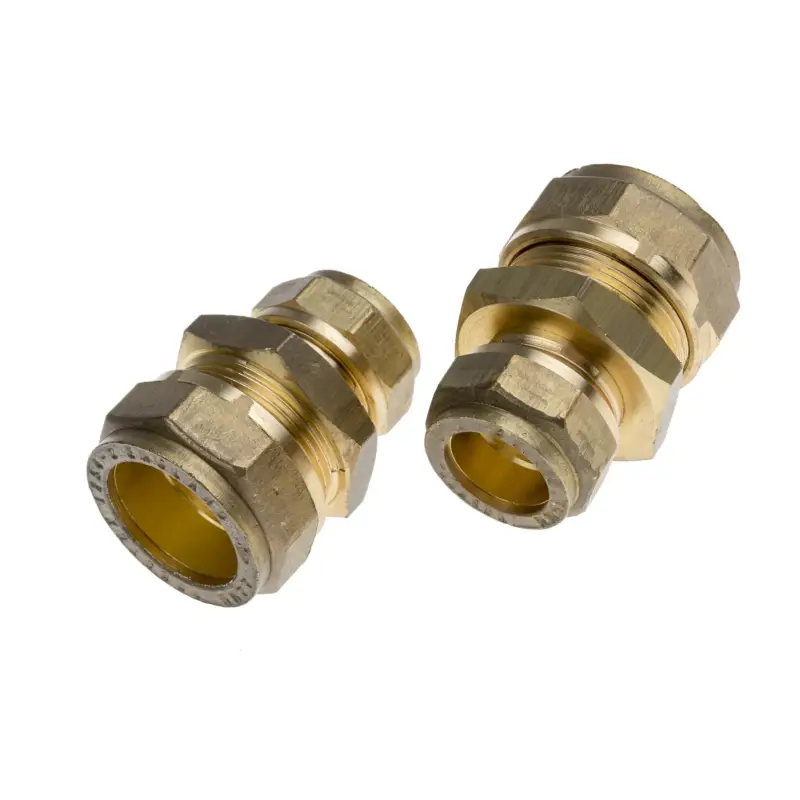
custom brass compression fittings
Precise Application Matching: Custom fittings match your exact needs, eliminating “close enough” issues. We engineer for your system’s pressure, temperature, and dimensions, ensuring optimal performance and preventing leaks.
Material and Finish Customization: Choose your brass alloy and finish for your environment. We offer enhanced corrosion resistance, specific properties, or aesthetics, providing durability even in harsh conditions.
Unique Design Integration: Integrate custom features, streamlining your system. Specialized threads, ports, or shapes fit seamlessly, minimizing connections, simplifying assembly, and enhancing efficiency.
Enhanced Performance and Reliability: Custom fittings meet high standards, optimizing flow, pressure, and sealing. This results in a reliable, efficient system, minimizing downtime and maintenance.
Why Choose Our Brass Compression Fittings
Superior Material Quality and Durability
We utilize premium brass alloys, ensuring exceptional strength and corrosion resistance. This translates to long-lasting fittings that withstand high pressure and temperature variations. Our rigorous quality control processes guarantee that each fitting meets stringent standards, minimizing the risk of leaks and failures, providing peace of mind for critical applications.
Precision Engineering and Reliable Seals
Our brass compression fittings are engineered with precision, ensuring accurate dimensions and consistent performance. The design of our ferrules and nuts optimizes compression, creating a tight and reliable seal. This meticulous engineering minimizes the potential for leaks, even in demanding environments, offering a superior level of connection integrity.
Extensive Product Range and Customization
We offer a comprehensive selection of brass compression fittings in various sizes, shapes, and configurations to meet diverse application requirements. Furthermore, we provide customization options, allowing you to tailor fittings to your specific needs. This flexibility ensures you can find the perfect solution for any project, regardless of complexity.
Consistent Availability and Efficient Delivery
We maintain a robust inventory of brass compression fittings, ensuring consistent product availability to meet your project timelines. Our streamlined logistics and efficient delivery processes minimize lead times and ensure timely delivery of your orders. We understand the importance of keeping your projects on schedule, and we are committed to providing reliable and prompt service to support your operational needs. This prevents costly delays and allows you to maintain productivity.
DF Hydraulics: Your Leading Brass Compression Fittings Manufacturer
DF Hydraulics is your premier brass compression fitting manufacturer, delivering exceptional quality and reliability. We specialize in producing a wide range of compression fittings, engineered for secure, leak-free connections across diverse hydraulic and pneumatic applications. Our commitment to precision manufacturing and stringent quality control ensures durable, high-performance fittings. Choose DF Hydraulics for dependable brass compression solutions.
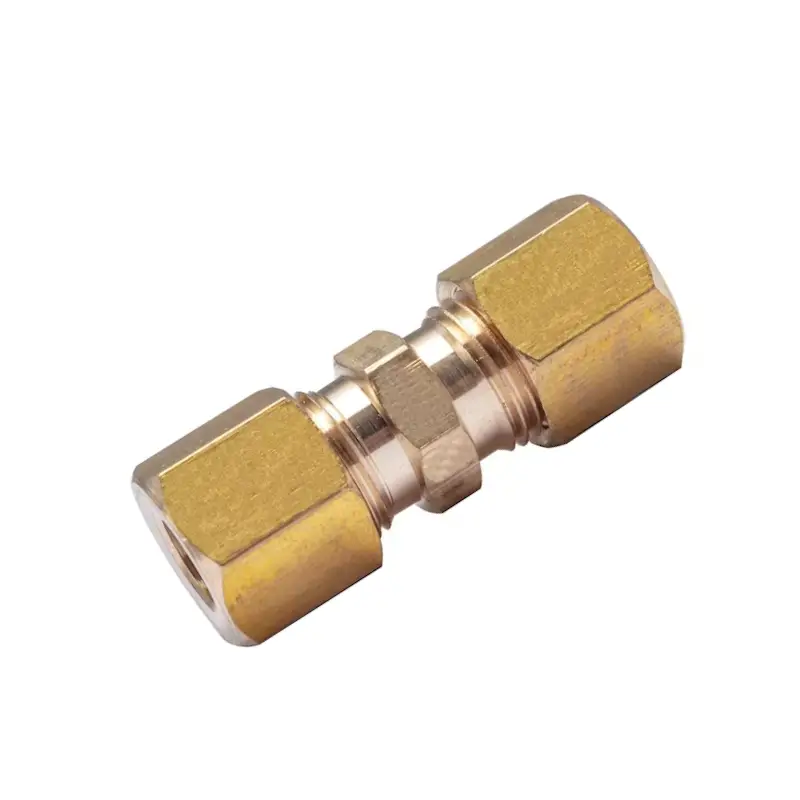
1 2 brass compression fittings
We offer high-quality 1/2 inch brass compression fittings, designed for reliable and leak-free connections. Our selection includes various styles, from straight connectors to elbows and tees, catering to diverse plumbing and industrial needs. Crafted from durable brass, these fittings ensure longevity and performance. Trust our 1/2 inch compression fittings for secure, efficient piping solutions.
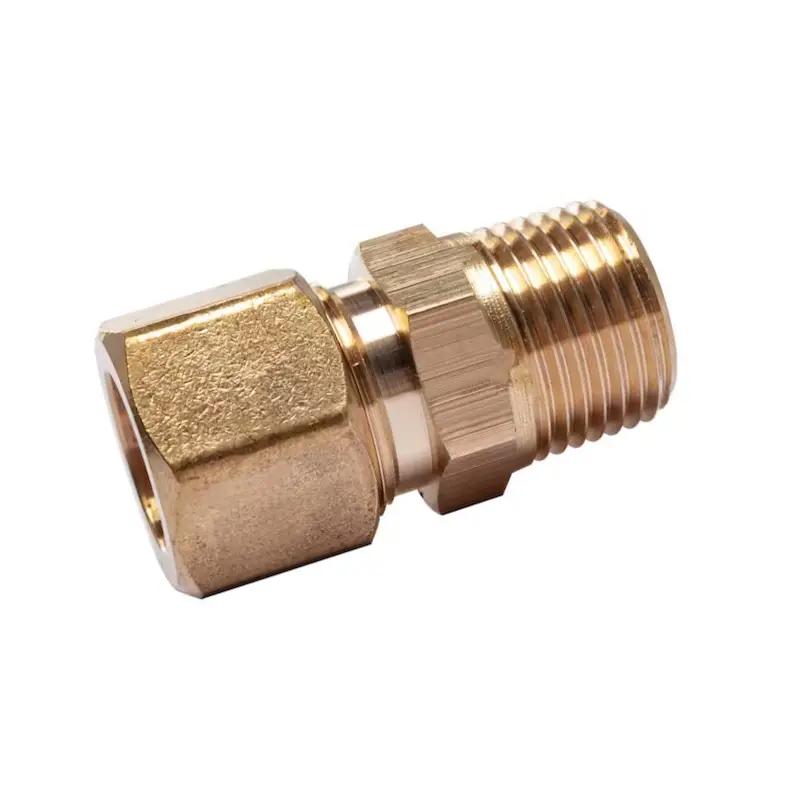
1 4 brass compression fitting
We offer high-quality 1/4 inch brass compression fittings, designed for secure and reliable connections in various applications. Our compression fittings are manufactured with precision, ensuring leak-free performance and durability. Available in a range of configurations, we cater to diverse needs, from simple plumbing to complex industrial systems. Trust our 1/4 inch brass compression fittings for dependable, long-lasting solutions.
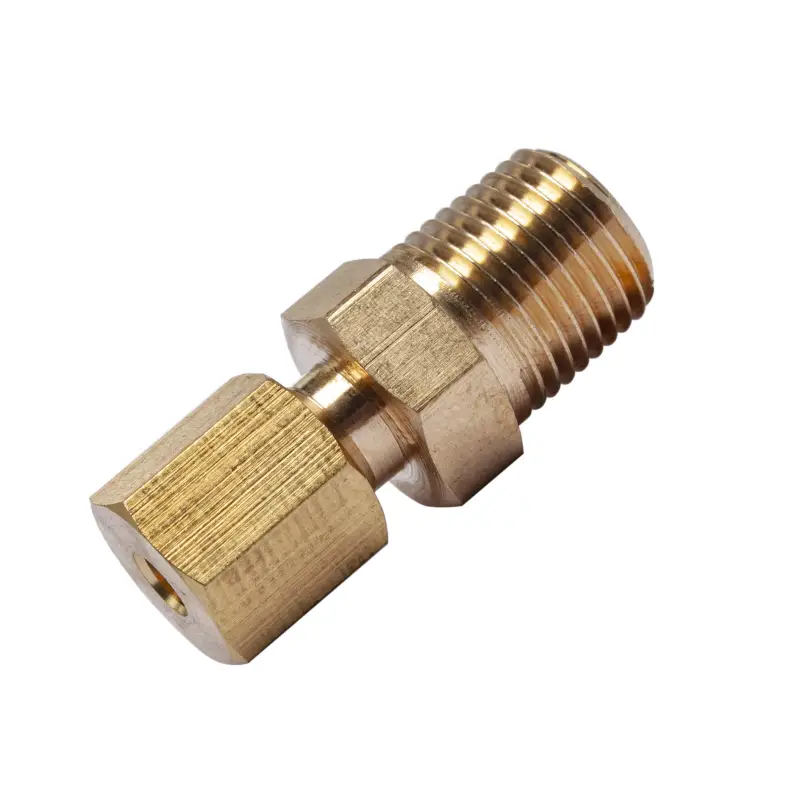
1 8 brass compression fitting
When it comes to 1/8 inch brass compression fittings, we offer a selection designed for precision and reliability. Our compression fittings made of brass are crafted from high-quality brass, ensuring durability and resistance to corrosion. We provide these fittings for applications requiring secure, leak-free connections in tight spaces. Whether for instrumentation, pneumatic systems, or other delicate applications, our 1/8 inch brass compression fittings deliver consistent performance.
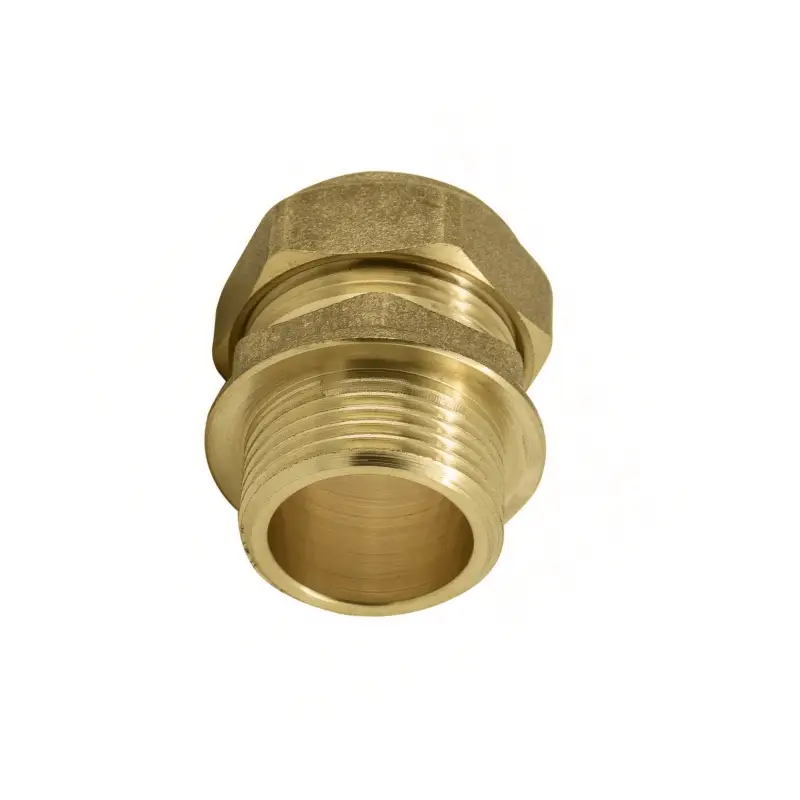
1-1/2 brass compression fittings
We offer 1-1/2 brass compression fittings, crafted for robust, leak-proof connections. Ideal for demanding plumbing, gas, and industrial systems, our fittings ensure reliability. Experience superior performance with our precision-engineered components, designed for easy installation and long-lasting durability. Choose our 1-1/2 brass compression fittings for dependable connections.

3 4 brass compression fittings
We offer 3/4″ brass compression fittings, designed for robust and leak-proof connections. Our selection includes various styles to suit diverse plumbing and industrial needs. Crafted from durable brass, these fittings ensure longevity and reliability. We provide precise engineering and consistent quality, making them ideal for secure connections in demanding environments. Find the perfect 3/4″ brass compression fitting for your project with us
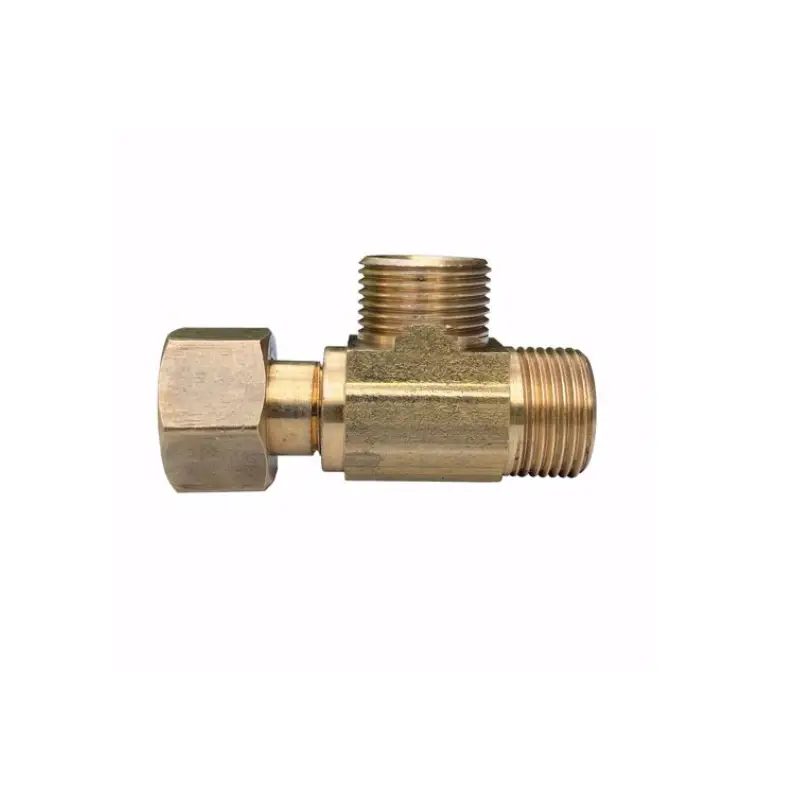
3 8 brass compression fittings
We offer 3/8 inch brass compression fittings, engineered for reliable, leak-free connections. Our selection includes various configurations, ensuring a perfect fit for your plumbing, gas, or hydraulic systems. Crafted from durable brass, these fittings withstand pressure and corrosion. Trust our precision-engineered 3/8 inch compression fittings for secure and long-lasting performance.
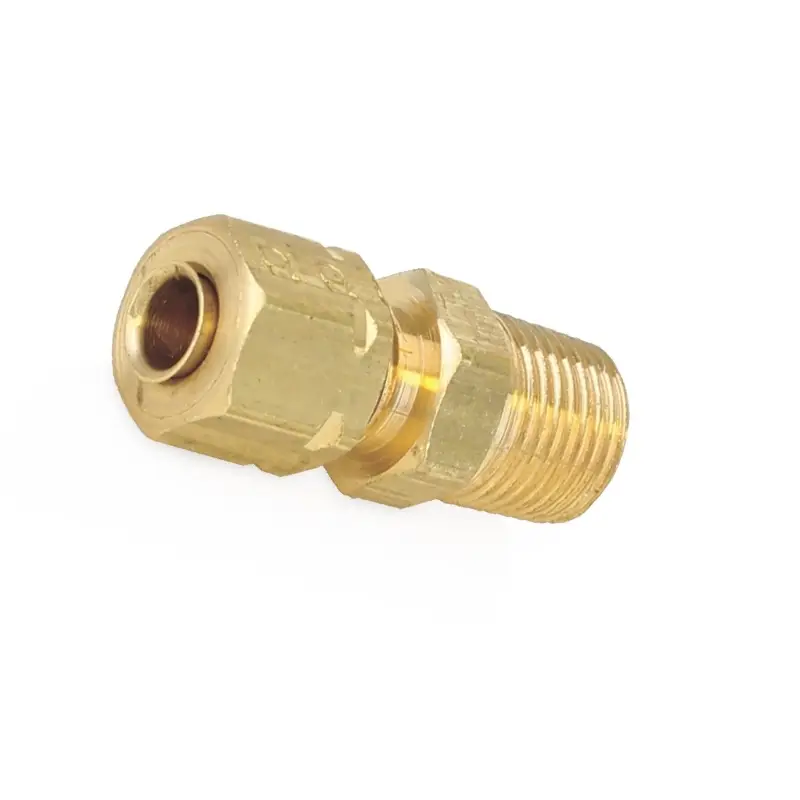
3 16 brass compression fittings
Looking for 3/16 inch brass compression fittings? We offer a wide selection of these precision-engineered components, designed for reliable, leak-free connections in various applications. Our fittings are manufactured from high-quality brass, ensuring durability and corrosion resistance. Find the perfect 3/16 inch fittings for your project with our extensive inventory and expert support.
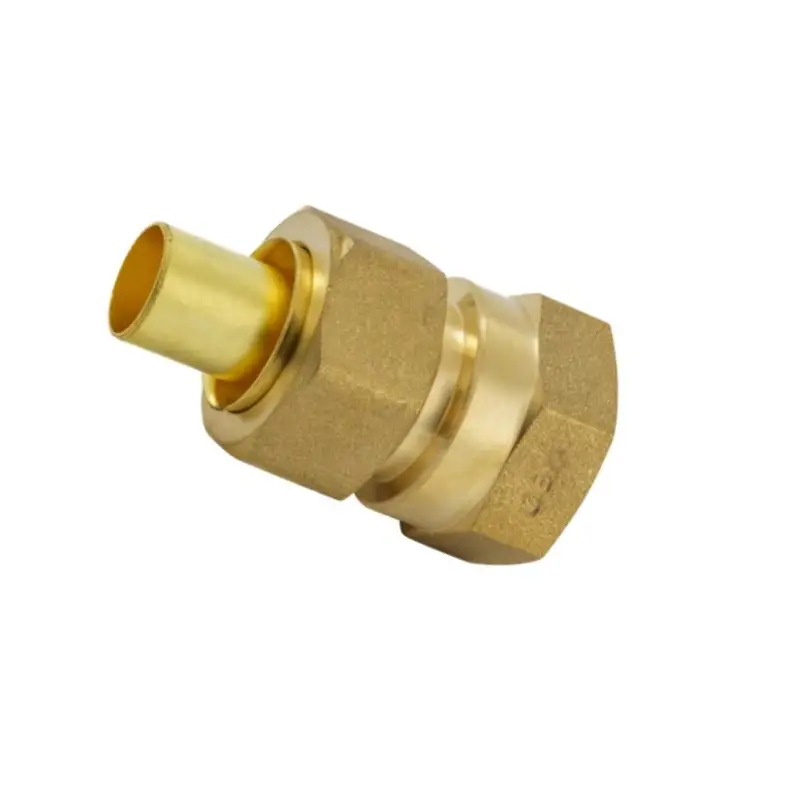
5 8 brass compression fittings
Looking for reliable 5/8 inch brass compression fittings? We offer a comprehensive selection of high-quality fittings, designed for secure, leak-free connections. Our 5/8 inch fittings are manufactured to exacting standards, ensuring durability and performance in plumbing, gas, and industrial applications. Browse our inventory for various configurations, and experience the dependability of our brass compression solutions.

5 16 brass compression fittings
We offer 5/16 inch brass compression fittings, engineered for reliable, leak-free connections. Our selection includes various styles, ensuring a perfect fit for your specific application. Crafted from durable brass, these fittings withstand demanding conditions. Trust our 5/16 inch compression fittings for secure and long-lasting performance in plumbing, gas, and other systems.

5 32 brass compression fittings
We supply 5/32 inch brass compression fittings, designed for precise and reliable connections. Our fittings are crafted from durable brass, ensuring corrosion resistance and long-lasting performance. Ideal for small-diameter tubing applications, these fittings deliver secure, leak-free seals. Explore our range and find the perfect 5/32 inch brass compression fittings for your needs.
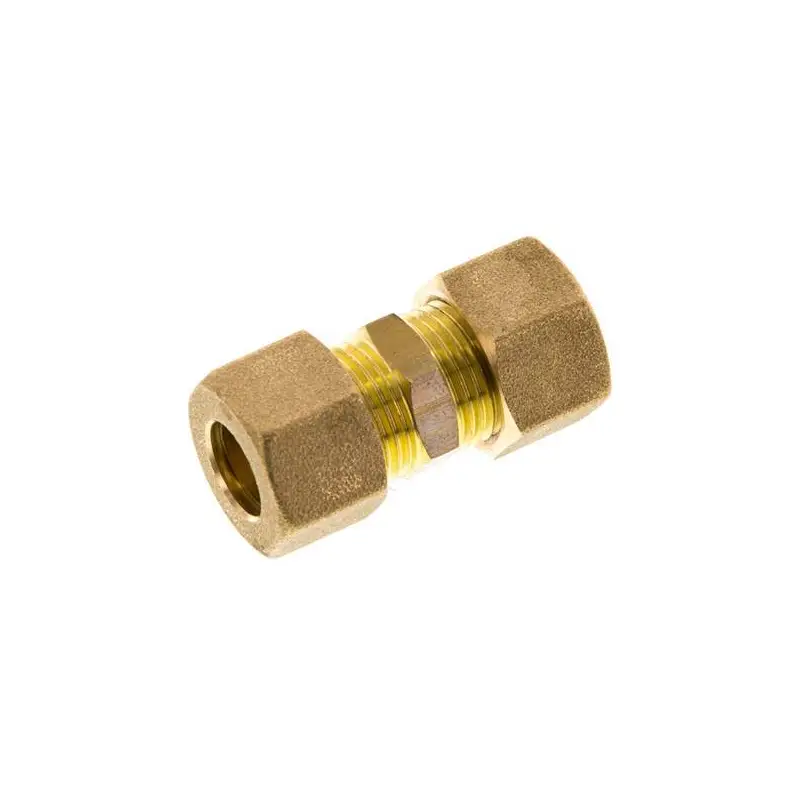
12mm straight brass compression fittings
We offer 12mm straight brass compression fittings, designed for reliable, leak-proof connections. Crafted from durable brass, these fittings are ideal for plumbing, gas, and hydraulic applications. Our fittings ensure secure connections for copper, brass, and plastic pipes. Choose our 12mm straight brass compression fittings for dependable performance and easy installation.
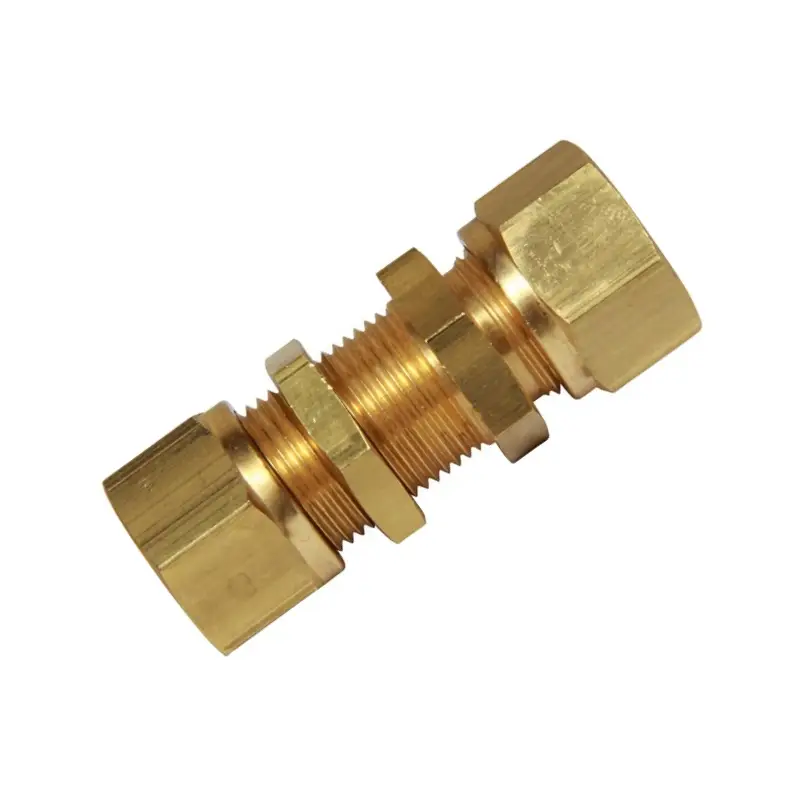
15mm straight brass compression fittings
We offer high-quality 15mm straight brass compression fittings, designed for reliable and leak-free connections. These fittings are ideal for plumbing, gas, and various fluid transfer applications. Crafted from durable brass, they ensure long-lasting performance and resistance to corrosion. Our 15mm straight fittings provide a secure and efficient solution for your connection needs, with easy installation and dependable results.
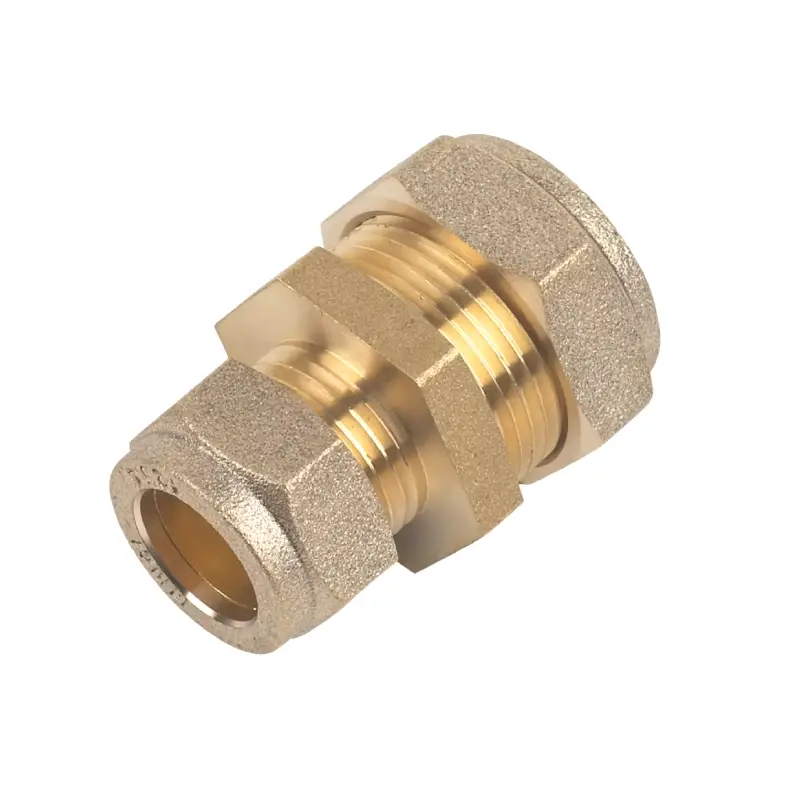
22mm brass compression fittings
We offer a wide selection 22mm brass compression fittings, designed for secure and reliable connections. Our fittings are engineered for durability, ensuring leak-free performance in plumbing, gas, and various industrial applications. Choose from a range of styles, including elbows, tees, and couplers, all crafted from premium brass. Trust our 22mm fittings for robust and long-lasting solutions.
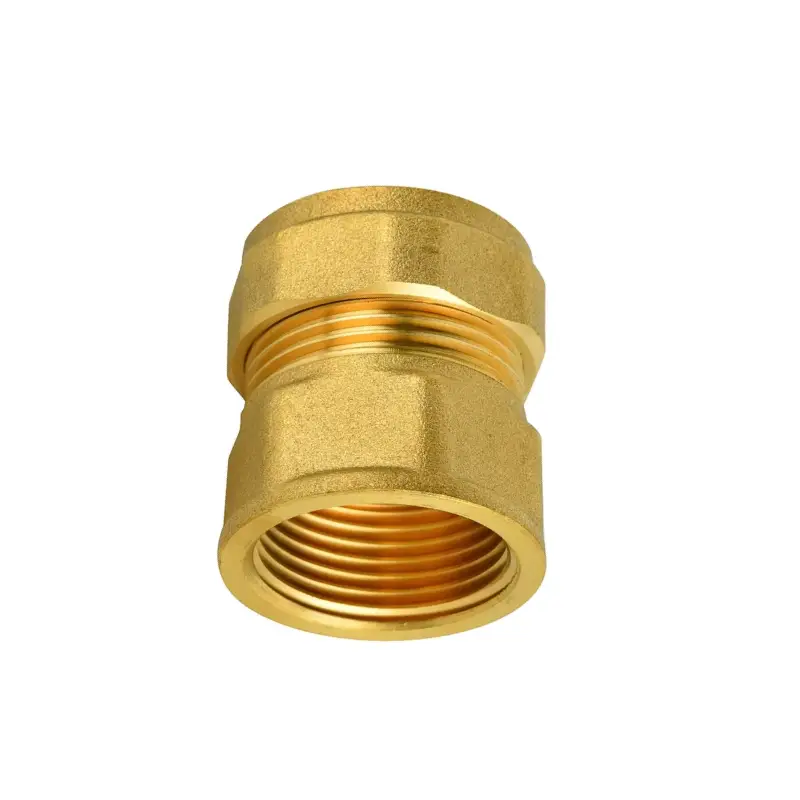
28mm brass compression fittings
For robust and reliable connections, we offer high-quality 28mm brass compression fittings. Engineered for durability, these fittings provide secure, leak-free joints for plumbing, heating, and gas applications. Our 28mm brass compression fittings are designed for easy installation, ensuring long-lasting performance in demanding environments. Trust in our precision-manufactured fittings for your critical projects.
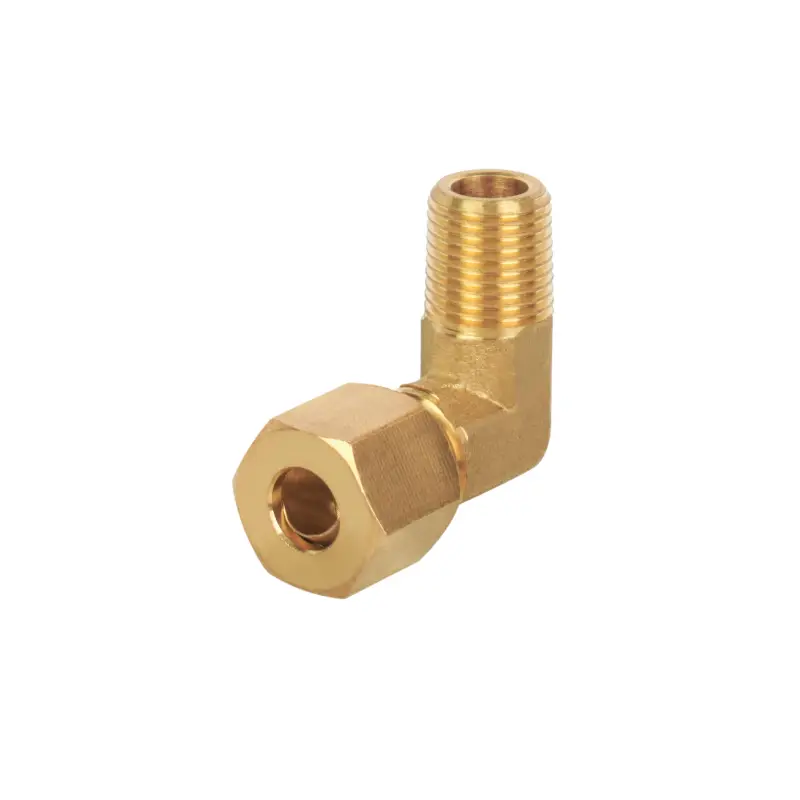
90 degree brass compression fittings
We offer 90-degree brass compression fittings, engineered for reliable, leak-proof connections in tight spaces. These fittings are ideal for plumbing, gas, and hydraulic systems, providing a durable and efficient solution for changing pipe direction. Our selection includes various sizes to match your specific needs, ensuring a secure fit and long-lasting performance. Trust our 90-degree brass compression fittings for your demanding applications.
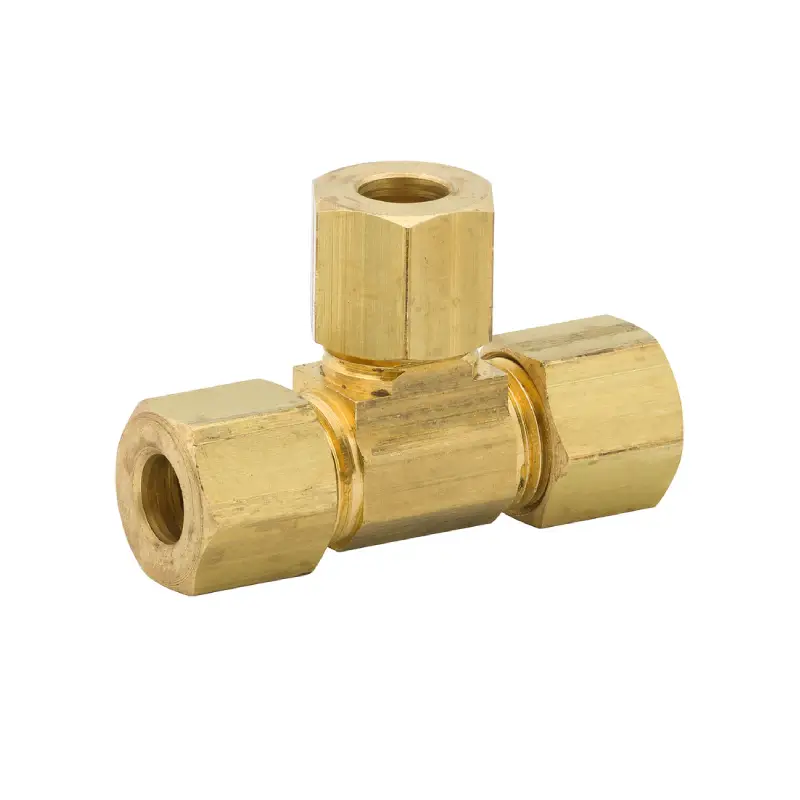
compression brass t fitting
We offer a diverse range of compression brass T fittings, designed for reliable and leak-free connections. Our fittings are crafted from durable brass, ensuring longevity and resistance to corrosion. Ideal for plumbing, gas, and hydraulic applications, our Tee fittings provide secure branching connections. Available in various sizes, we cater to your specific project needs with precision-engineered components. Trust in our compression brass T fittings for consistent performance.
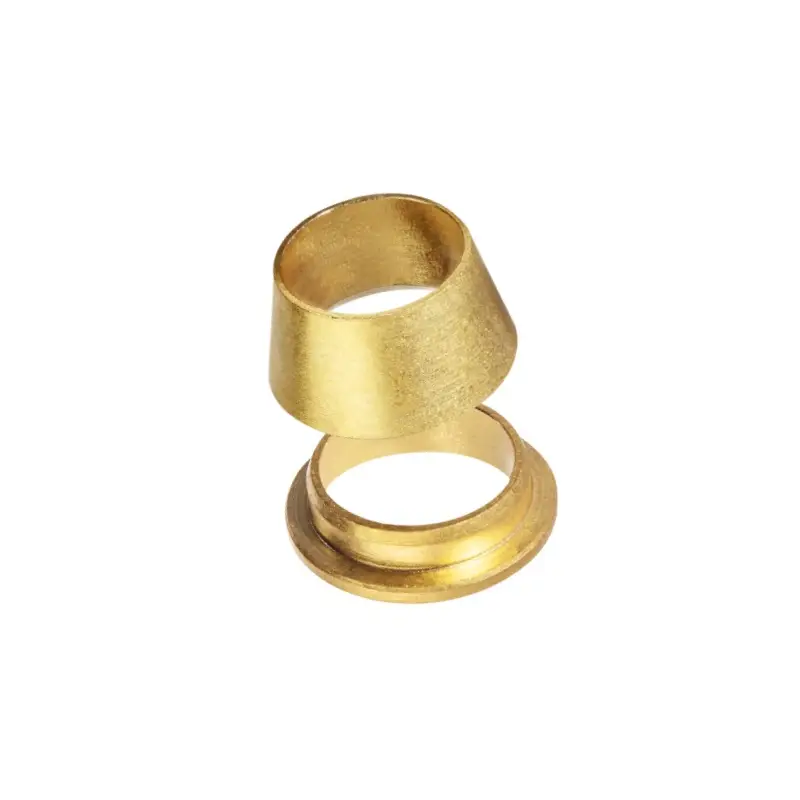
double ferrule brass compression fittings
We offer high-performance double ferrule brass compression fittings, designed for superior leak-proof connections in critical applications. Our fittings provide enhanced grip and sealing, ideal for high-pressure and vibration environments. Crafted from premium brass, they ensure durability and corrosion resistance. Available in various sizes and configurations, our double ferrule fittings deliver reliable, long-lasting performance you can trust.

metric brass compression fittings
We offer a wide selection of metric brass compression fittings, designed for precise and reliable connections. Our range caters to diverse applications, providing secure, leak-free performance in metric systems. Engineered with high-quality brass, these fittings ensure durability and longevity. Explore our extensive inventory for the perfect metric compression solution, tailored to your specific needs.
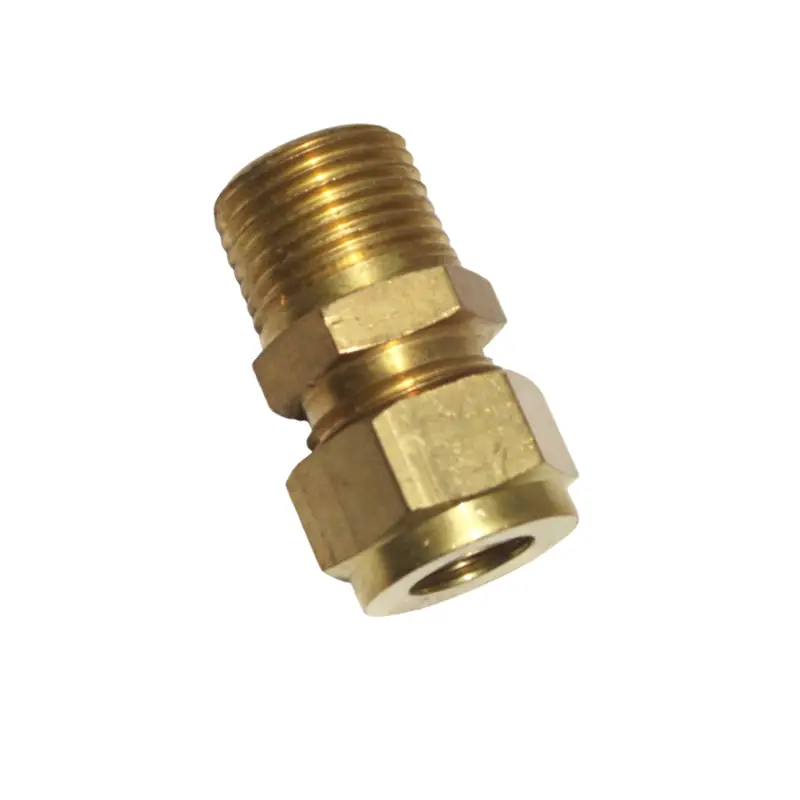
brass olive compression fittings
We offer a full range of brass olive compression fittings, designed for reliable and leak-proof connections. Our fittings utilize high-quality brass olives to create secure seals, ideal for copper, brass, and plastic pipes. Available in various sizes and configurations, our brass olive compression fittings are perfect for plumbing, gas, and low-pressure hydraulic systems. Trust in our durable and precisely engineered fittings for consistent performance and peace of mind.
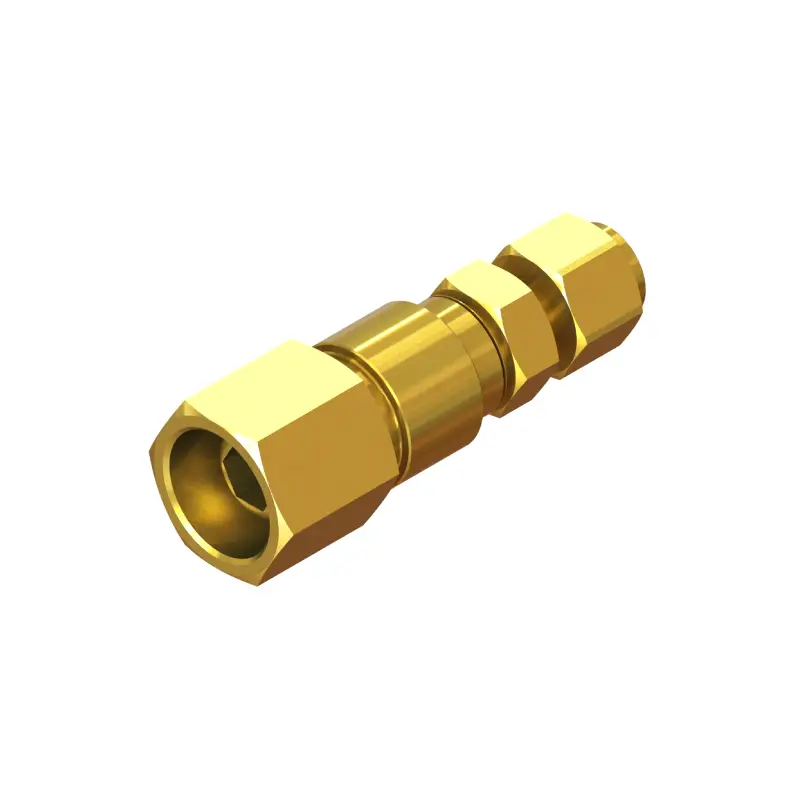
swagelok brass compression fittings
We offer genuine brass metric compression fittings, renowned for their exceptional quality and leak-tight performance. Swagelok fittings are engineered for precision and reliability, ensuring secure connections in critical fluid system applications. Our inventory includes a wide range of Swagelok brass fittings, designed to meet demanding industrial requirements. Trust in Swagelok’s proven technology.
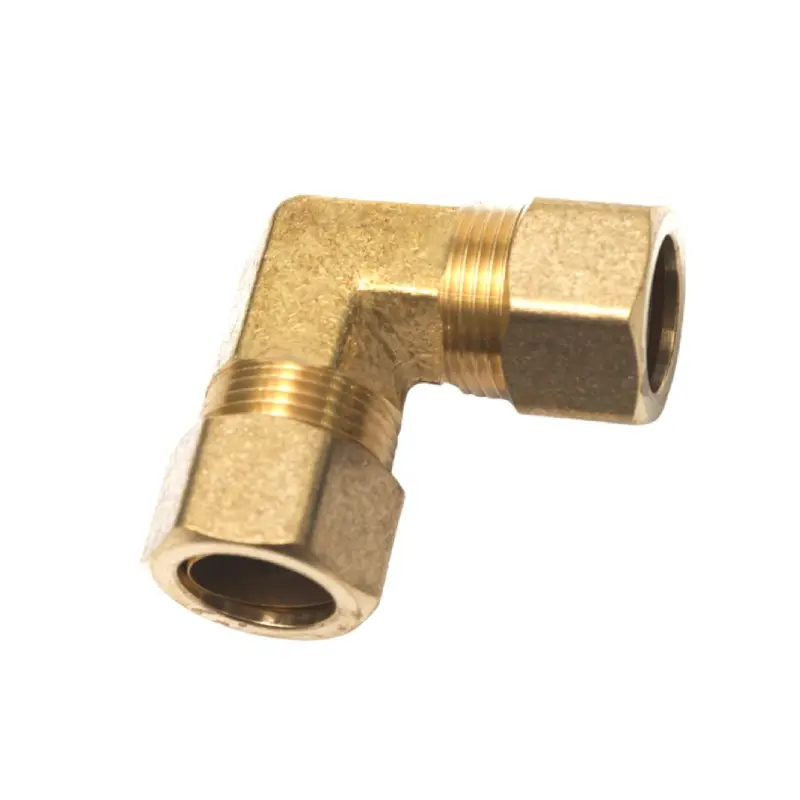
brass compression elbow fitting
We offer a full range of brass compression elbow fittings, designed for reliable and leak-free connections in plumbing and gas systems. Our elbows provide precise 90-degree turns, simplifying pipe routing. Crafted from high-quality brass, these fittings ensure durability and corrosion resistance. Available in various sizes, our compression elbow fittings are easy to install, offering a secure and efficient solution for your connection needs.
What Are brass compression fittings?
Brass compression fittings are a type of fitting used to join two pipes or tubes together without the need for soldering or threading. They are widely utilized in plumbing, gas, and hydraulic systems due to their ease of installation and reliable sealing capabilities. These fittings consist of several components: a compression nut, a compression ring (or ferrule), and the fitting body. When the nut is tightened, the compression ring is compressed onto the pipe, creating a tight, leak-proof seal.
The use of brass in these fittings provides several advantages. Brass is a durable and corrosion-resistant material, making it suitable for various applications, including those involving water and gas. The design of compression fittings allows for relatively simple installation, which is particularly beneficial in situations where space is limited or where soldering is impractical. Furthermore, they can be disassembled and reassembled, making them useful for maintenance and modifications to existing systems.
brass compression fitting size chart
Understanding brass compression fitting sizes involves navigating a combination of imperial and metric measurements, and it’s important to differentiate between pipe sizes and the actual outside diameter (OD) of the tubing.
Here are key considerations and where to find helpful information:
Key Size Considerations:
- Outside Diameter (OD):
- This is the crucial measurement for compression fittings. They are designed to fit specific ODs of tubing.
- Common ODs are expressed in fractions of an inch (e.g., 1/4″, 3/8″, 1/2″).
- Metric ODs are also prevalent.
- Nominal Pipe Size (NPS):
- This refers to the “nominal” size of the pipe, which doesn’t always directly correlate to the actual OD.
- When compression fittings are used to connect to threaded pipes, the NPS of the pipe thread is also a factor.
- Thread Sizes:
- Compression fittings can incorporate various thread types (e.g., NPT, BSP).
- Thread size charts are essential for matching fittings to threaded connections.
Where to Find Size Charts:
- Manufacturer Catalogs:
- Manufacturers of brass compression fittings provide detailed catalogs with size charts and specifications. These are the most reliable sources.
- Supplier Websites:
- Online suppliers often include size charts and product specifications on their websites.
- Websites like those of plumbing supply companies, and industrial supply companies.
- Online Resources:
- Websites that specialize in fittings and adapters often provide comprehensive size charts and conversion tables.
General Information:
- When looking at a size chart, be sure to note if it is referring to the pipe size, or the tubing outside diameter.
- It is very important to use the correct size compression fitting for the pipe or tube that you are using. Using the incorrect size can cause leaks, and or damage to the system.
can you reuse brass compression fittings?
The question of reusing brass compression fittings is nuanced, and while technically possible in some situations, it’s generally approached with caution.
Factors to Consider:
- The primary concern is the compression ring (ferrule). During initial tightening, this ring deforms to create the seal. This deformation often makes it difficult to achieve a perfect seal upon reuse.
- The condition of the pipe is also crucial. If the pipe has been deformed or scored by the previous fitting, a reliable seal may be impossible.
- The overall condition of the fitting itself, including the nut and body, must be assessed for any damage or corrosion.
- Manufacturers generally advise against reusing the compression rings.
Best Practices:
- While the nut of the fitting can often be reused, it is highly recommended that the compression ring/ferrule be replaced every time the fitting is disassembled.
- Thorough inspection of all components is essential. Any signs of damage or wear should result in replacement.
- When reusing any portion of a compression fitting, extreme care must be taken during reassembly and tightening.
- It is always best practice to pressure test any plumbing connection after it has been reassembled.
- When in doubt, it is always best to replace the entire fitting. This will avoid the potential for leaks, and water damage.
In essence, while reuse might seem economical, the potential for leaks and subsequent damage often outweighs any cost savings.
how much pressure can a brass compression fitting hold?
The pressure a brass compression fitting can hold varies significantly based on several factors, including the fitting’s size, material, design, and the application it’s used in.
- General Pressure Ratings:
- Brass compression fittings are generally designed to handle moderate to high pressures. Their typical pressure ratings can range from approximately 150 PSI to over 1,200 PSI. This wide range reflects the diverse applications where these fittings are used.
- Factors such as the wall thickness of the fitting, the precision of its manufacturing, and the quality of the brass alloy used all play a role in determining its pressure capacity.
- Application-Specific Considerations:
- In standard residential plumbing applications, where water pressures are relatively low, brass compression fittings are commonly used and perform reliably.
- However, in industrial settings or hydraulic systems where much higher pressures are present, specially designed high-pressure brass fittings are required. These fittings often feature reinforced designs and are made from higher-strength brass alloys.
- Also, gasses compared to liquids, have different pressure characteristics, and that must be taken into account.
- Factors Affecting Pressure Capacity:
- Temperature: Elevated temperatures can reduce the pressure-holding capacity of brass.
- Installation: Proper installation, including correct tightening of the compression nut, is crucial for achieving the fitting’s rated pressure capacity.
- Fluid type: The type of fluid or gas passing through the fitting can also influence its performance. Corrosive fluids or highly compressible gases may require fittings with higher pressure ratings.
While brass compression fittings are versatile and capable of handling significant pressures, it’s essential to select the appropriate fitting for the specific application and to ensure proper installation.
how to install brass compression fittings?
Installing brass compression fittings is a straightforward process that provides reliable, leak-free connections without the need for soldering or threading. By following these steps carefully, you can ensure a successful installation. Remember to always double-check your work and test for leaks before putting the system into full operation.
Step 1. Prepare the Pipe or Tubing:
- Begin by ensuring the pipe or tubing is cut squarely and cleanly. A pipe cutter is recommended for a precise cut, avoiding any burrs or jagged edges that could interfere with the seal. Carefully inspect the cut end to remove any debris or imperfections. A clean, smooth pipe end is critical for the compression ring to properly grip and create a leak-free connection.
- Next, thoroughly clean the outside surface of the pipe where the compression fitting will be installed. Use fine sandpaper or steel wool to remove any oxidation, dirt, or scratches. This ensures a smooth surface for the compression ring to seat against. Measure and mark the insertion depth on the pipe, corresponding to the fitting’s internal depth. This mark will serve as a visual guide during assembly, ensuring the pipe is inserted fully into the fitting.
Step 2. Disassemble the Fitting and Slide Components onto the Pipe:
- Carefully disassemble the brass compression fitting. This typically involves unscrewing the compression nut and removing the compression ring (ferrule). Pay close attention to the order in which the components are removed, as they must be reassembled in the same sequence. Ensure that the inside of the nut, and the inside of the fitting are free of any debris.
- Slide the compression nut onto the pipe first, followed by the compression ring. Make sure the orientation of the compression ring is correct; it usually has a tapered end that should face towards the fitting body. Double-check that all components are present and properly positioned before proceeding. This step is crucial to avoid having to disassemble the entire connection later if a component is missed.
Step 3. Insert the Pipe into the Fitting Body:
- Push the pipe firmly into the fitting body until it reaches the marked insertion depth. Ensure the pipe is fully seated and aligned with the fitting’s internal bore. Verify that the pipe is straight and not angled, as this can affect the seal’s integrity.
- Hold the pipe securely in place while you slide the compression ring and nut towards the fitting body. The compression ring should fit snugly against the fitting’s internal shoulder. If the pipe is not fully inserted, or if it is crooked, it will be very difficult to tighten the nut, and a leak will likely result.
Step 4. Tighten the Compression Nut:
- Begin tightening the compression nut by hand, ensuring it threads smoothly onto the fitting body. Once hand-tight, use two wrenches to complete the tightening process. One wrench should hold the fitting body steady, while the other tightens the nut. Avoid over-tightening, as this can damage the compression ring or the fitting body.
- Tighten the nut until it feels snug, then give it an additional quarter to half turn. The amount of tightening required can vary depending on the fitting size and the type of pipe being used. A properly tightened compression fitting should provide a secure and leak-free connection. It is always best to test the fitting after installation.
Step 5. Test for Leaks:
- After installing the fitting, conduct a thorough leak test. For water applications, turn on the water supply and carefully inspect the connection for any signs of leakage. For gas applications, use a leak detection solution or an electronic leak detector.
- If a leak is detected, carefully tighten the compression nut slightly. If the leak persists, disassemble the fitting and inspect the components for damage or misalignment. Ensure the pipe is properly prepared and reassemble the fitting, paying close attention to the tightening process. Always remember, if you have any doubt, it is always best to start over.
how to remove a brass compression fitting?
Removing brass compression fittings requires a careful approach to avoid damaging the pipe or the fitting itself. By following these steps, you can safely disassemble the connection and prepare for any necessary repairs or replacements.
Step 1. Isolate the Supply and Release Pressure:
- Before attempting to remove any compression fitting, it is crucial to isolate the supply of fluid or gas to the pipe. For water lines, turn off the main water supply valve. For gas lines, shut off the gas valve at the meter or appliance. This step prevents any uncontrolled release of pressure or fluid during disassembly.
- Once the supply is shut off, release any residual pressure in the pipe. Open a nearby faucet or valve to drain any remaining water or gas. Allow sufficient time for the pressure to dissipate completely. This will prevent any unexpected bursts of fluid or gas when the fitting is loosened.
Step 2. Loosen the Compression Nut:
- Using two wrenches, one to hold the fitting body steady and the other to loosen the compression nut, begin to unscrew the nut. Apply steady pressure to loosen the nut, but avoid excessive force, which could damage the fitting or the pipe. If the nut is particularly tight, you may need to apply penetrating oil to help loosen it.
- Continue to unscrew the nut until it is completely loose from the fitting body. You may need to wiggle the nut to get it past the pipe, if there isn’t enough room to slide it off. Once the nut is loose, carefully slide it back along the pipe, away from the fitting body.
Step 3. Remove the Compression Ring (Ferrule):
- The compression ring (ferrule) will likely be tightly adhered to the pipe. Carefully slide or pry the ring off the pipe. If the ring is stuck, you may need to use a flathead screwdriver or pliers to gently loosen it. Be cautious not to scratch or damage the pipe surface.
- Inspect the compression ring for any signs of damage or deformation. If the ring is damaged, it should be replaced with a new one. Clean the pipe surface thoroughly to remove any residue or debris left by the compression ring. This ensures a clean surface for any future connections.
Step 4. Separate the Pipe from the Fitting Body:
- Gently pull the pipe away from the fitting body. If the pipe is stuck, you may need to wiggle it back and forth to loosen it. Avoid using excessive force, as this could damage the pipe or the fitting.
- Once the pipe is separated, inspect the fitting body for any signs of damage or corrosion. If the fitting is damaged, it should be replaced. Clean the inside of the fitting body to remove any debris or residue. This ensures a clean surface for any future connections.
Step 5. Inspect and Clean Components:
- Thoroughly inspect all components of the compression fitting, including the nut, compression ring, and fitting body, for any signs of damage or wear. Replace any damaged components before reassembling or installing a new fitting.
- Clean all components thoroughly to remove any debris, corrosion, or residue. This will ensure a proper seal and prevent leaks in future installations. Use a clean cloth or brush to remove any dirt or grime.
can you use brass compression fittings on CPVC?
Using brass compression fittings on CPVC (Chlorinated Polyvinyl Chloride) pipe requires careful consideration and is generally not recommended for long-term, reliable installations.
CPVC and brass have significantly different thermal expansion rates, which can lead to leaks over time as temperatures fluctuate. Brass is a rigid metal, while CPVC is a thermoplastic, and this difference in rigidity can also cause stress on the CPVC pipe, especially under pressure.
Additionally, the standard compression rings (ferrules) designed for metal pipes are not ideal for CPVC. These rings can crush or damage the CPVC pipe, leading to leaks or even pipe failure. CPVC requires specialized fittings and joining methods, such as solvent welding or CPVC-specific compression fittings designed with inserts to prevent crushing. For reliable CPVC connections, it’s always best to use fittings specifically designed for CPVC materials, ensuring compatibility and long-term performance.
can you use brass compression fittings on pex?
Using brass compression fittings on PEX (cross-linked polyethylene) pipe is a common practice, but it requires specific considerations and the correct type of fitting.
PEX is a flexible plastic pipe, and brass compression fittings designed for metal pipes can damage or crush it if not used correctly. Therefore, standard brass compression fittings are not a direct, universally compatible solution for PEX.
To use brass compression fittings with PEX, you must use insert stiffeners or sleeves inside the PEX pipe. These inserts provide support to the PEX tubing, preventing it from collapsing or being crushed by the compression ring.
Additionally, it is very important to use a compression ring that is designed to be used with PEX. There are brass compression fittings made specifically for PEX that take this into account. When using the correct components and following proper installation procedures, brass compression fittings can provide reliable connections for PEX systems. However, other connection methods such as crimp rings, expansion fittings, or push-fit fittings are often preferred for PEX due to their simplicity and reliability.
can you use brass compression fittings on plastic pipe?
Using brass compression fittings on plastic pipe is possible, but it comes with significant caveats and potential issues. The compatibility heavily depends on the specific type of plastic pipe and the design of the compression fitting.
Standard brass compression fittings, designed for rigid metal pipes, often pose challenges when used with softer plastic materials.
The primary concern is that the standard compression ring (ferrule) can crush or deform the plastic pipe, leading to leaks or even pipe failure. Plastic pipes, such as polyethylene (PE) or PVC, have different mechanical properties compared to metal, and they require specialized fittings that provide a more even distribution of pressure.
To use brass compression fittings on plastic pipe, you would ideally need to use insert stiffeners inside the plastic pipe to prevent crushing, and you will need to ensure the fitting is rated for the pressure the pipe will be under. It is also important to consider the temperature and chemical compatibility of the plastic with the fluid or gas being conveyed. For reliable and long-lasting connections on plastic pipes, it’s generally best to use fittings specifically designed for the plastic material, such as push-fit fittings or solvent-welded connections.
Quote Us Now